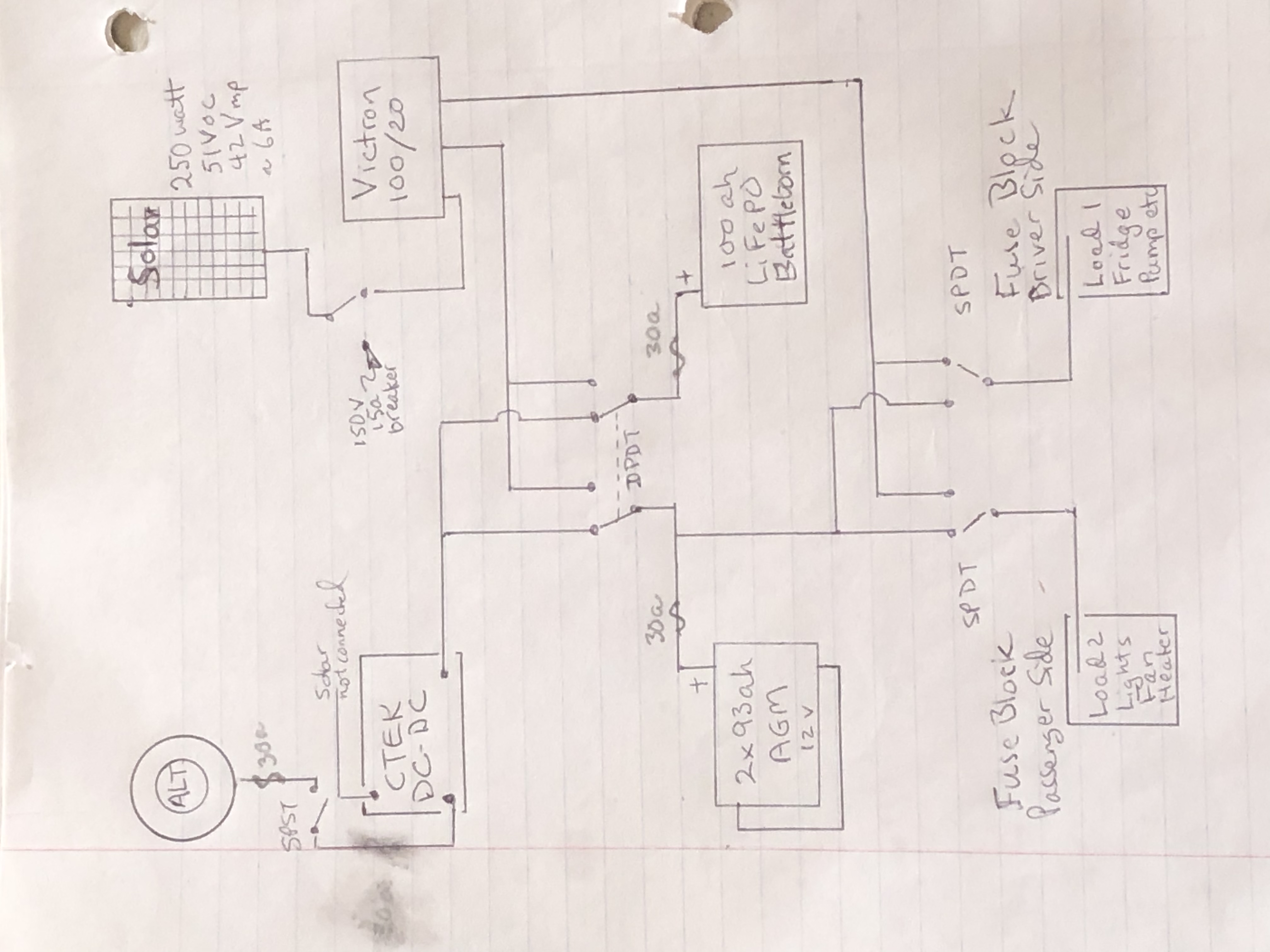I have read: https://community.victronenergy.com/questions/92306/1-mppt-controller-with-2-power-banks.html and some others but still have questions, especially since one battery bank will be LiFePO, and the other AGM ( both nominal 12v):
if I have an external switch connected between a 100/20 MPPT controller and the batteries, can a load or controller, or battery be damaged if I switch the battery to “off” while there is solar input? Actually, the purpose of the switch is to redirect the MPPT’s output between 2 separate battery banks. The banks are never joined. The interrupt would “normally” be momentary, as the switch passes between connection from one bank to the other. I also would have a disconnect switch between the solar and the controller, but human error might come into play, and the solar not get disconnected every time I switch between battery banks. If it matters, solar voltage would be approx 50-55Voc, and PV amperage low at approx 6a. Also, I had intended to connect loads to the controller’s Load outputs…but this is not mandatory.
Is this safe if 1) always disconnect solar while switching the output, or 2) doesn’t really matter if for relatively short durations, or 3) never safe at all?
***related, the thread referenced above ended with ”Mike” recommending connecting the 2nd battery bank to the load outputs of the MPPT (100/20 in my case). This might have some advantage, though without having the unit and manual in front of me to try this, I don’t know if that is really a feasible and safe approach. The downside of using an external switch is a) the MPPT’s logging stats will get confused, and b) since one bank is AGM and the other LiFePO, the charge profile will not be optimal for both without further monkeying around from a smartphone each time (NOT desirable).
further info: currently, I have 160w panel, a Morningstar PWM solar and CTEK DC-DC charger with built in MPPT for solar, and both battery banks are AGM. I switch which controller is attached to which battery without issue (I think…I’ve had this for 3 yrs.). The LiFePO is new, replacing one AGM bank, but 2nd AGM bank too good to throw away. The 250w 55voc panel has yet to be installed (currently 160w, ~22voc), and the Victron MPPT has not even been ordered yet. All negative leads (which not shown on diagram), are bonded together at one common point. It might make sense to NOT share that bond with the new higher voltage solar negative lead…but run it ONLY into the Victron MPPT.
I am open to other suggestions, but this mimics current set up, which has been working (caveats on voltage and chemistry differences).

